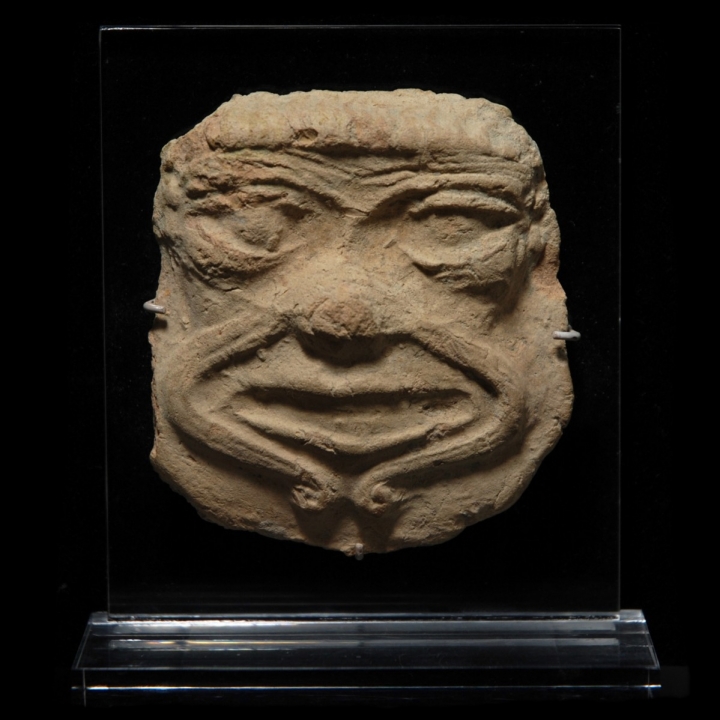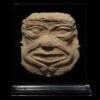Babylonian Terracotta Mask of Humbaba
Culture: Sumerian
Period: 1st half of 2nd millennium B.C.
Material: Terracotta
Dimensions: 7.4 cm x 6.9 cm
Price: Sold
Ref: 6343
Provenance: Private collection Schlauf-Lensing, Germany. Thence Antikenkabinett Gackstätter with the inventory number 02270. There acquired on 18 June 2011 by the private collection Peter Hollander (1931-2014). With the original certificate by Bernd Gackstätter.
Condition: Unrestored and of beautiful quality.
Description: Light clay terracotta plaque depicting the demonic head of Humbaba. The guardian of the cedar forest was beheaded by Gilgamesh and his loyal friend Enkidu because they wanted to fell cedars in the forest of the goddess Inanna. As a demon, Humbaba had supernatural abilities, he was in possession of fears and was able to recognize his enemies from a great distance. Plaques like these were therefore used to keep evil away, but also to bring good luck to its owner. Humbaba has a broad nose, vigilant eyes set between strong eyelids and a wrinkled forehead with short, wavy strands of hair. The mouth is open to a broad grimace and reveals the rows of teeth. Typical of the depictions of the Humbaba from Mesopotamia is the long moustache, the strands framing the mouth and reaching down to the chin. The bartends are curled up. Mounted.




